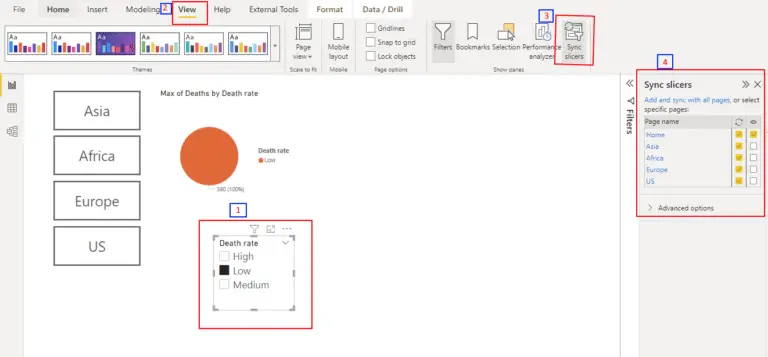How to Create a Dynamic Axis in Power BI Using Field Parameters
In the world of data visualization, flexibility and interactivity often determine the success of a report. Dynamic axis in Power BI offers just that—allowing users to explore data from different perspectives dynamically. This feature enhances user engagement and insight discovery. Today, I’ll guide you through a step-by-step process on how to implement a dynamic axis in Power BI using field parameters, complete with test data. Let’s dive into a practical example that will not only educate but also inspire you to integrate dynamic axes into your own reports.
Step 1: Prepare the Test Data
First, we need to create some test data. Imagine a dataset containing sales information across different regions, products, and categories. Here’s a simple example of what that might look like:
| Region | Category | Product | Sales |
|---|---|---|---|
| North | Beverage | Tea | 1200 |
| South | Beverage | Coffee | 1500 |
| East | Food | Sandwich | 800 |
| West | Food | Burger | 950 |
| North | Accessory | Napkin | 300 |
| South | Accessory | Cup | 450 |
You can create this dataset directly in Power BI using the “Enter Data” feature.
let
Source = Table.FromRows({
{"North", "Beverage", "Tea", 1200},
{"South", "Beverage", "Coffee", 1500},
{"East", "Food", "Sandwich", 800},
{"West", "Food", "Burger", 950},
{"North", "Accessory", "Napkin", 300},
{"South", "Accessory", "Cup", 450}
},
type table [Region = text, Category = text, Product = text, Sales = Int64.Type])
in
Source
Steps to Use This Data in Power Query:
- Copy the entire code snippet above.
- Open Power BI Desktop.
- Go to the ‘Home’ tab and click on ‘Get Data’ and then choose ‘Blank Query’.
- In the query editor that opens up, go to the ‘Home’ tab and click on ‘Advanced Editor’.
- Delete any existing code in the Advanced Editor and paste the copied code snippet.
- Click ‘Done’ to load the data.
- Now you can use this table to continue building your report.
This table will create a sample dataset with the fields Region, Category, Product, and Sales and populate it with the example data you provided. You can modify or expand this data directly in Power Query if needed.
Step 2: Create a Field Parameter
Once your data is loaded:
- Navigate to the “Modeling” tab in Power BI Desktop.
- Click on “New Parameter” and select “Field”.
- In the Field Parameter creation window:
- Name your parameter (e.g., “Dynamic Axis”).
- Choose fields that will be part of the dynamic behavior. For our example, select ‘Region’, ‘Category’, and ‘Product’.
- Set Display Name to decide how each field will be labeled in the slicer.
Step 3: Use the Field Parameter in a Visual
After creating the field parameter, it’s time to use it:
- Drag a bar chart onto your canvas.
- From the “Fields” pane, drag the “Dynamic Axis” field parameter onto the Axis area of the chart.
- Drag the “Sales” field to the Values area.
Your chart will now display sales data according to the default selection of the field parameter.
Step 4: Insert a Slicer for the Field Parameter
To allow users to dynamically change the axis:
- Insert a slicer into your report.
- From the “Fields” pane, drag the “Dynamic Axis” parameter into the slicer.
- Configure the slicer for better user experience, like vertical orientation or dropdown.
Users can now select what dimension (Region, Category, Product) they want to analyze on the axis of the bar chart.
Step 5: Customize and Format
Enhance the visual appeal and clarity of your report:
- Title: Add a clear title to both the slicer and chart.
- Tooltips: Customize tooltips to provide additional information when hovering over the chart.
- Format: Use consistent and accessible color schemes and fonts.
Step 6: Publish and Share
Once your report is complete:
- Save your Power BI file.
- Publish it to the Power BI service for sharing with your audience or stakeholders.
Conclusion
#Creating a dynamic axis in Power BI using field parameters significantly enhances the interactivity and flexibility of your reports. It allows users to view data in various dimensions without navigating away from the current report page, promoting an engaging and insightful analytical experience. Whether for business dashboards, marketing analytics, or sales reports, dynamic axes make your data visualizations more powerful and user-friendly.






